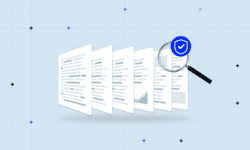Since the start of 2023, fears of economic downturn have become a reality for a myriad of tech’s leading companies: Amazon, Spotify, Lyft, PayPal, Yahoo, Microsoft, and Netflix all contributing to the 168,243 layoffs that have already happened this year—with thousands more to come. As we move deeper into a state of economic downturn, concerns over how industries and roles will fare are endless.
Further, more and more C-Suite executives are strategizing ways to weather market uncertainty and become recession-proof. The main question is: how do we preserve our human capital? How can we keep our strongest workers, even when cash flow is low?
Whether their strategy involves introducing new products to the market, changing business models, or even expanding services through a new platform—leaning out teams and saving capital will not help a company to survive, let alone thrive, in unpredictable times.
Below, we dive into the industries that have and have not historically weathered economic uncertainty well, and how digital transformation is changing the job market (for the better).
Industries to Lead the Job Market in 2023
- E-commerce: Once bustling physical retail spaces are now empty malls and vacant storefronts as consumers turn to the internet to shop for everything from small convenience items to luxury goods—a trend that accelerated exponentially in the COVID-19 pandemic. Between 2017 and 2022, the number of people working in e-commerce and online auctions grew by 15% within the U.S.
- Cloud Computing: With the onset of the COVID-19 pandemic, digital transformation became a solution for companies across sectors to adjust to new, safer working conditions—remote and hybrid setups, as well as technology that allows efficient and effective collaboration. A big part of what has made the work-from-home model stick is cloud computing, as it syncs information and data between different computers instantaneously. The cloud computing market is set to grow 15.7% per year between 2022 and 2030, which reflects the level of demand.
- Artificial Intelligence: In the same vein, artificial intelligence (AI) has seeped into nearly every industry and revolutionized how work is completed. Today, AI-powered robots assist with surgical procedures while simple automation tools help businesses handle data entry and marketing. The limitless opportunities of AI, ranging from conversational marketing to AI-based product suggestions, have opened the doors for investors and tech enthusiasts to realize the untapped potential of AI technology. Experts project the market to grow 20.1% between 2022 and 2029. More promising, Generative AI, a branch of artificial intelligence, can analyze vast amounts of data, identify patterns and trends that human researchers would struggle to accomplish manually, and accurately summarize them. It has the potential to transform the market intelligence industry.
- Healthcare: The U.S. Bureau of Labor Statistics (BLS) forecasts that employment in healthcare will grow 13% between 2021 and 2031—making it possibly the most promising sector in the U.S. currently. Many available roles are technical (i.e., physicians and nurses), however, there are management and other business service-related opportunities. What positions the industry for long-term prosperity? Throughout the COVID-19 pandemic, hospitals and medical institutions learned the impact of being low or understaffed, and therefore, are taking measures to be prepared for the unexpected.
- Hospitality: In the BLS’s projections of the industries with the fastest-growing wages and salaries, jobs in the leisure and hospitality sector made up seven out of 20 positions. These numbers can be attributed to the onset of the COVID-19 pandemic—a period where hotels, resorts, and lodges were unable to safely operate and, as a result, had to downsize their teams. With travel restrictions lifted and vaccines administered, purchases of travel and tourism-related goods and services by international visitors traveling in the United States totaled $7.9 billion in January 2023 (compared to $3.7 billion in January 2022), an increase of 114 percent when compared to the previous year.
Industries Most Affected by Economic Downturns
- Retail: In economically challenging times, discretionary items are cut from household budgets first—leading retail in every sector to be most susceptible to earnings losses (the exception being discount purveyors, big box stores, and DIY manufacturers). Adding onto the financial toll COVID-19 took on retailers with brick-and-mortar locations, a downturn could be the death knell for more than a few stores (e.g., Bed Bath and Beyond).
- Food Service: Again, in times when spending is tight, non-essential commodities are often limited—meaning, less eating out and takeaway meals. Even though restaurants pivoted to takeout and delivery models to survive the COVID-19 pandemic (those who didn’t likely shuttered their operation), most are still barely seeing green. After restrictions were lifted and restaurants officially reopened, the public wasn’t rushing back to sit amongst slews of patrons, which only delayed the cash flow for owners.
- Manufacturing: While demand for specific products is high, supply chain issues stemming from a handful of macroeconomic and geopolitical factors (i.e., the Ukraine-Russian war, the China-Taiwan conflict, etc.) are slowing down manufacturing and minimizing profits. Essential commodities that many sectors rely on are no longer guaranteed, forcing suppliers to reconsider how they can acquire the supplies they need to meet their end users’ demands. As the strain on materials continues to grow, the monetary deficit brought on by this shortage will inevitably induce financial crises around the world unless alternative solutions are sought.
- Real Estate: Historically, economic downturns have hit the housing market the hardest, with the 2008 “Great Recession” calling into question how reliable work for real estate agents, mortgage lenders, and everything connected to construction, from workers to suppliers, actually is. Especially when the remote or work-from-home model seems to be a permanent choice for many companies, commercial real estate could continue to experience lower activity.
The Age of Digital Transformation
COVID-19 propelled the adoption of workplace technologies in nearly all sectors—even for companies that were hesitant to change. Digital transformation, which encompasses technologies like cloud computing, AI, IoT, and robots, has become an important enabler for sustainable growth and innovation.
From stimulating new business models, services, and revenue streams that can help companies boost bottom-line results to encouraging greater operational efficiencies and productivity by streamlining complex processes, automating manual tasks, and removing redundancies, there’s no shortage of benefits.
These applications have positioned digital transformation to become a powerful engine for economic growth, with more than 60% of the global GDP in 2022 expected to have been dependent on digital technologies. This becomes an especially important point when thinking of the widespread labor shortages that sprouted at the height of the COVID-19 pandemic.
In 2021, more than 47 million workers quit their jobs while 32% of Americans switched their careers, ushering in a wave of unemployed workers and the Great Resignation. Employees held more power than their employers and demonstrated it through demands for higher wages, remote-working policies, and safety protocols around COVID-19.
“Unfilled jobs were a primary reason that seven in ten companies fell behind in scheduled production, leading many industry leaders to identify labor shortages as a challenge to growth,” McKinsey & Company reported.
Digital transformation is also driving the need to create more resilient workforces. Demand for workers with advanced digital skills continues to grow, yet three out of four workers don’t have the digital skills businesses need. Only 28% participate in training programs. According to the Forum, only 33% of technology jobs worldwide are filled by people with the necessary skills.
In a Veobot report that surveyed 500 manufacturers in the US, UK, and Japan, 57% of those surveyed said that their use of robots is “not [to] replace human workers in their facilities but rather working alongside humans to supplement their work.”
Moreover, automation has also allowed manufacturers to keep up with increasing consumer demands, as 58% of businesses have seen an increase in fulfillment volume within the past year. A larger percentage of businesses (73%) have struggled to attract and retain employees, leaving 75% of light industrial companies feeling unprepared for the upcoming months.
Ultimately, implementing digital transformation technologies has streamlined mundane, repetitive, and even costly tasks while optimizing process results, allowing human workers to focus on more analytical work. For example, knowledge workers commonly spend upwards of $15,000 to $35,000 for a market intelligence report, relying on a variety of techniques (interviews, surveys, focus groups, etc.) to learn what people want and need, and why they do. Not only is market research expensive, but time-consuming—taking weeks, if not months, to conduct.
However, AI and automation has emerged as a solution to this problem: by using algorithms developed with data from sources like Amazon, Walmart and Target, businesses can scan huge amounts of market research information in far less time. While the cost savings from AI and automation are impressive (hundreds of analysts and months, potentially years, would be needed to scan the same amount of data), AI can conduct an unprecedented amount of research in minutes.
So what does AI and automation in market intelligence mean for knowledge workers? Both help to game out possible consequences of business strategies and actions, effectively streamlining the decision-making process and allowing workers to prioritize analyses of these outcomes rather than waste time aggregating data. From an operational perspective, leadership will see their workers spending more time on valuable work (that cannot be accomplished by AI and automation) and less on menial, tedious tasks—effectively optimizing efficiency and productivity within their workforce.
Staying Ahead of the Unexpected
Staying up to date on every industry development requires a tool that separates the noise from the insights you need. With AlphaSense, there’s no need to meticulously search through databases or spend hours reviewing a cohort of documents to analyze what industry is next on the HCM chopping block.
Discover how the power of AlphaSense’s proprietary AI search technology will keep you informed on market movements and help you stay ahead of your competitors.
Start your free trial of AlphaSense today.




